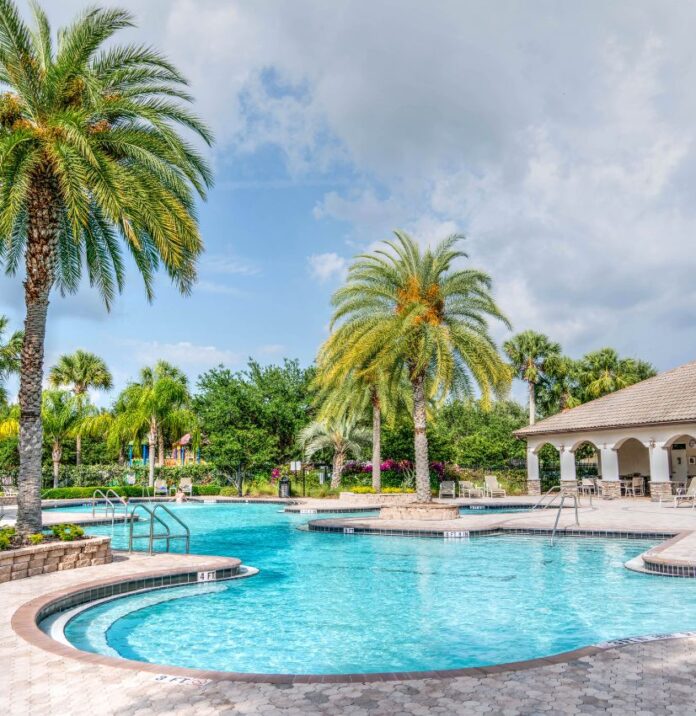Brisbane’s warm, sunny climate makes a swimming pool a must-have for homeowners looking to enjoy the outdoors while staying cool. But when it comes to choosing the right type of pool, many find themselves torn between fibreglass and concrete pools.
While concrete pools offer complete customization, Explore a Brisbane fibreglass pools have gained massive popularity due to their quick installation, durability, and low maintenance. If you’re wondering which option is best for your home, this article will provide a detailed comparison so you can make an informed decision.
Fibreglass vs. Concrete Pools: Understanding the Basics
What is a Fibreglass Pool?
A fibreglass pool is a pre-manufactured, one-piece shell made of durable fibreglass reinforced with a gel-coat finish. It is delivered to your home and installed in an excavated hole, making the process fast and efficient.
What is a Concrete Pool?
A concrete pool is built on-site by constructing a reinforced concrete shell. The surface is then finished with plaster, tiles, or pebbles. These pools are fully customizable but take significantly longer to install.
Why Fibreglass Pools Are a Better Choice for Brisbane Homes
1. Faster Installation Time
🏆 Winner: Fibreglass Pools
If you want to enjoy your pool sooner, a fibreglass pool is the best choice.
- Fibreglass Pool Installation: 1–2 weeks
- Concrete Pool Installation: 2–4 months
Concrete pools take much longer because the concrete needs time to cure before the finishing work can begin. If you want to avoid long delays and backyard disruptions, a fibreglass pool is the way to go.
2. Cost Comparison: Upfront & Long-Term Expenses
🏆 Winner: Fibreglass Pools
When comparing prices, fibreglass pools generally have lower upfront costs and significantly less maintenance over time.
| Feature | Fibreglass Pool | Concrete Pool |
|---|---|---|
| Initial Cost | $30,000 – $60,000 | $50,000 – $100,000+ |
| Installation Time | 1–2 weeks | 2–4 months |
| Annual Maintenance Cost | $500 – $1,000 | $2,000+ |
| Resurfacing Needed? | No | Every 10–15 years ($10,000+) |
Concrete pools require more chemicals, more cleaning, and resurfacing, making them more expensive over time.
3. Lower Maintenance & Easy Cleaning
🏆 Winner: Fibreglass Pools
Fibreglass pools are non-porous, meaning they don’t absorb water or allow algae to grow easily. This translates to:
✅ Fewer chemicals needed
✅ Less frequent cleaning
✅ Lower maintenance costs
On the other hand, concrete pools are highly porous, making them a breeding ground for algae. This requires more chemicals and cleaning, increasing the cost and effort of maintenance.
4. Durability & Longevity
🏆 Winner: Fibreglass Pools
Fibreglass pools are highly durable and flexible enough to withstand ground movement—a common issue in Brisbane’s shifting soil conditions.
Concrete pools, however, can crack over time, requiring expensive repairs and resurfacing every 10–15 years.
5. Comfort & Aesthetics
🏆 Winner: Fibreglass Pools
- Fibreglass pools have a smooth surface, preventing scrapes and injuries.
- Concrete pools have a rough texture, which can be uncomfortable for swimmers.
Modern fibreglass pools also come in stunning designs, mimicking high-end tiled finishes while being easier to maintain.
Environmental Benefits of Fibreglass Pools
1. Energy Efficiency
Fibreglass pools retain heat better than concrete, reducing heating costs and making them more energy-efficient.
2. Reduced Chemical Usage
With a non-porous surface, fibreglass pools require fewer chemicals, making them safer for families and the environment.
3. Sustainable Water Usage
Concrete pools need frequent acid washing and refilling, leading to higher water wastage. Fibreglass pools maintain water quality for longer, reducing the need for refills.
Customization & Design Options
While concrete pools offer full customization, fibreglass pools come in a variety of pre-designed shapes and sizes that suit most backyards. Modern fibreglass pools also include:
✅ Tanning ledges
✅ Built-in spas
✅ Water features & lighting
This means you don’t have to sacrifice style to enjoy the benefits of fibreglass.
Common Myths About Fibreglass Pools Debunked
Myth #1: “Fibreglass Pools Look Cheap”
✅ Reality: Today’s fibreglass pools have luxury finishes that rival high-end concrete pools.
Myth #2: “Fibreglass Pools Can’t Be Customized”
✅ Reality: Many fibreglass models come with built-in seating, spas, and water features.
Myth #3: “Fibreglass Pools Don’t Last as Long as Concrete”
✅ Reality: Fibreglass pools last 30+ years with minimal upkeep, while concrete pools require frequent repairs.
Case Studies: Brisbane Homeowners Who Switched to Fibreglass
🏡 The Smith Family (North Brisbane):
“We had a concrete pool for 10 years, and the maintenance was a nightmare. We switched to fibreglass, and it’s been a game-changer—so much easier to clean and maintain!”
🏡 The Johnsons (South Brisbane):
“Our new fibreglass pool was installed in just 10 days! It looks stunning, and we love how little work it takes to keep it clean.”
Conclusion: The Best Pool Choice for Brisbane Homes
When comparing fibreglass vs. concrete pools, fibreglass comes out as the clear winner for Brisbane homeowners.
✅ Faster installation
✅ Lower upfront and long-term costs
✅ Easier maintenance
✅ Durable and long-lasting
✅ Smooth, comfortable surface
✅ Environmentally friendly
If you want a pool that’s cost-effective, hassle-free, and long-lasting, fibreglass is the smarter choice.
FAQs
Q1: Are fibreglass pools cheaper than concrete pools?
Yes, they have lower upfront costs and less ongoing maintenance expenses.
Q2: How long does it take to install a fibreglass pool?
Most installations take 1–2 weeks, compared to 2–4 months for concrete pools.
Q3: Do fibreglass pools crack easily?
No, they are flexible and resistant to cracking, making them ideal for Brisbane’s soil conditions.
Q4: Can fibreglass pools be customized?
Yes! Many fibreglass pools come with built-in features like spas, ledges, and lighting options.
Q5: Which pool is better for Brisbane’s climate?
Fibreglass pools are better suited for Brisbane due to heat retention, durability, and low maintenance.































